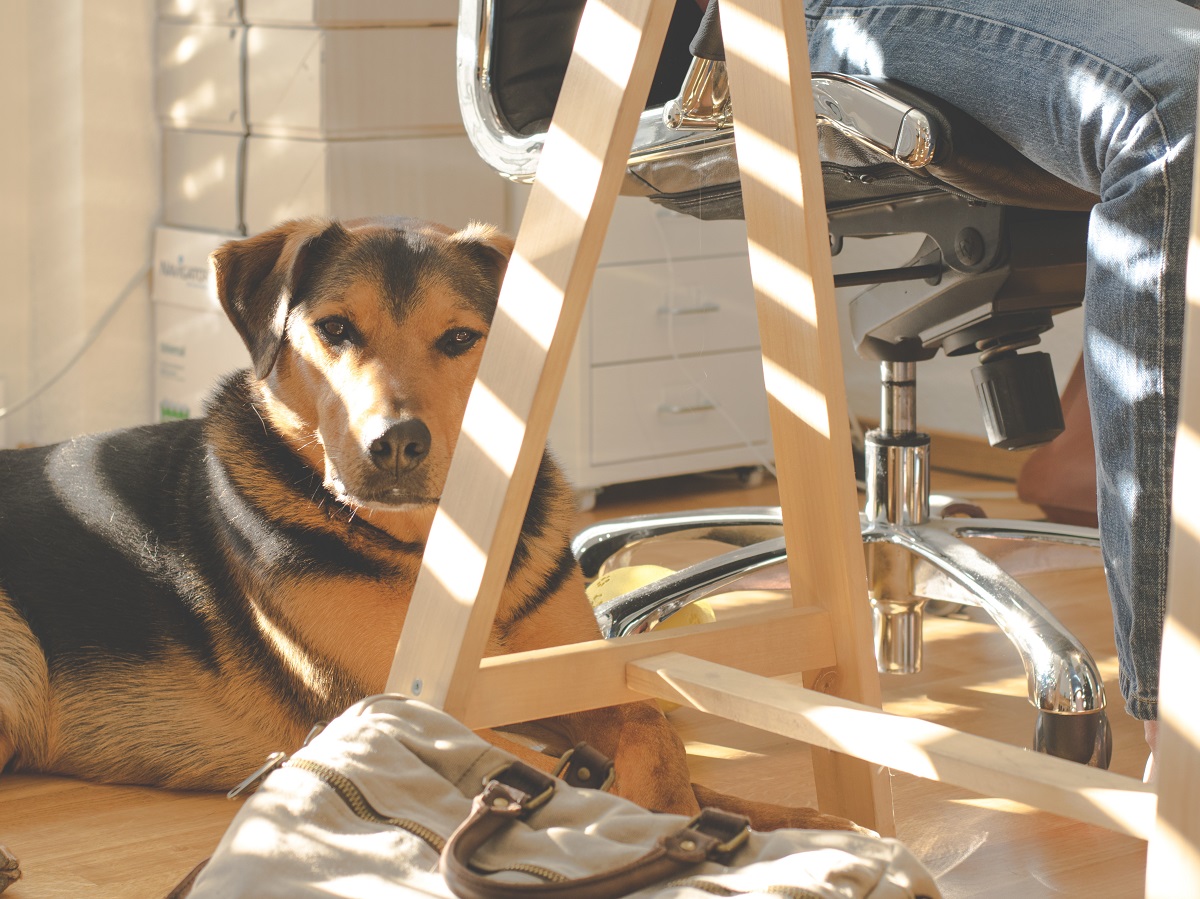Risks, Benefits of Dog-Friendly Offices
More employers are exploring the benefits of allowing pets in the workplace, but what are the legal, health and safety implications for landlords or property managers? Diane Hvolka from Cozen O’Connor Real Estate shares some insights.
By Laura Calugar
Dogs are man’s best friend, they say. But are they landlords’ as well? Bringing a pet to work might increase employees’ productivity and enhance their loyalty toward the company. This is why many modern office building owners have included dog-friendly spaces in their properties. According to a 2016 Society for Human Resource Management survey, 7 percent of employers permitted pets in the workplace, up from 4 percent in 2014. On the other hand, firms do have workplace safety rules, but landlords also need to take into account insurance, lease restoration clauses, special rules and regulations.
Commercial Property Executive talked to Diane Hvolka, a member of Cozen O’Connor Real Estate’s office/retail/industrial leasing and development practice in Los Angeles, about this sticky and growing nationwide issue. How can landlords turn their buildings dog friendly? What are the risk management issues that ownership and property management should take into consideration? Hvolka discusses the legal and operational changes needed to accommodate pets, as well as pet policies and practices, building ownership approval and the need to implement pet zones.
If an office building owner is interested in making their building dog friendly and allowing tenants to bring their dogs to work, what should they take into consideration?
First, owners should make sure that there are no local laws—such as health codes—that would prohibit establishing a dog-friendly property. Next, it is important for owners to check their insurance policies and determine what, if any, additional premium would be required. Even if permitted by law, it is possible that increased insurance coverage may make it cost-prohibitive to allow pets.
Whereas dogs may provide many benefits to people in the workplace, their presence may also pose several hazards and risks. What types of pet policies and practices should an office building owner or manager implement?
Office building owners desiring dog-friendly properties should develop specific rules pertaining to pet dogs in the office and include them as an exhibit in each lease. The rules should be very detailed and cover things such as:
- Dogs must be kept on leashes at all times when in common areas
- Dogs must have up-to-date rabies, Bordetella (kennel cough) and DHLPP vaccinations
- Dogs shall not be left unattended on the premises
- Dogs must be free of fleas and ticks at all times, etc.
 The rules should also address the maximum number of dogs permitted on the premises at any given time.
The rules should also address the maximum number of dogs permitted on the premises at any given time.
Ideally, in addition to other lease remedies, each lease should allow the landlord to bar rule-breaking pet dogs from the project and, in serious circumstances, terminate a tenant’s right to continue bringing pet dogs to work. For example, if a tenant’s pet dog bites another person or dog, the lease should give the landlord the right to immediately ban the biting dog from the project. Ideally, the lease should further provide that multiple biting violations will result in loss of the tenant’s right to bring any pet dogs to the project.
Landlords should consider requiring increased security deposits for those tenants whose employees bring pet dogs to the office, given the likelihood for dog-related damage upon move-out. Landlords should also ensure that the indemnification and waiver provisions in their leases are broad enough to cover dog-related injuries and property damage.
Another potential issue when allowing tenants to bring pet dogs to the office is dealing with other tenants who are allergic to dogs or fear or dislike them. If this is an issue, landlords will want to implement measures to ensure as little interaction as possible, which may include requiring pet dog owners to utilize only specified elevators or paths of travel. To address allergy issues, landlords should talk to their janitorial service providers about the pet-friendly policy and make sure janitors thoroughly clean areas where pets are located. Landlords should attempt to pass through any above-standard dog-related janitorial costs to the dog-owning tenants.
Animal magnetism is believed to reduce stress in the workplace and hang on to staff. Are there certain operational changes needed in order to accommodate pets in an office building?
From an operational standpoint, a landlord desiring a dog-friendly project should ideally provide an outdoor area specifically for “bathroom breaks.” If possible, this should be a grassy area and should be fenced off from the rest of the common area in order to avoid contamination issues—fencing is also key to separating dog-loving tenants from those who do not want contact with dogs. With respect to the initial build-out, landlords may want to require that tenants install types of flooring other than carpet in order to minimize damage from pets.
If we’re talking about a workplace that does not accept dogs, what are a landlord’s obligations when it comes to tenants bringing service dogs to work?
Under the Americans with Disabilities Act (ADA), even landlords with a “no pets” policy are typically obligated to allow service dogs in their buildings. The ADA does not require that service dogs wear a vest, ID tag or other specific identification. If property management spots a dog in the building, it may not be readily apparent that the dog is a service animal. In this instance, the ADA allows the property manager or the landlord to ask only two specific questions: “Is the dog a service animal required because of a disability,” and “What work/task has the dog been trained to perform?”
Per the ADA, persons with disabilities who use service animals cannot be isolated from others, treated less favorably than others, or charged fees that are not charged to other persons without service animals. This means that landlords cannot require tenants with service dogs to pay special “dog deposits” or similar fees, nor require that such tenants ride only in specifically designated elevators. However, landlords can require that their tenants pay for property damage caused by their service dogs, as long as other tenants of the building—without service dogs—are also customarily required to pay for property damage that they cause.
How do you think this will evolve in the future? Will landlords start accepting other types of pets as well, such as cats or birds?
You never know—these types of trends seem to be a function of tenant demand. For example, in California many tech-type tenants currently will not lease space unless the landlord allows employees to bring their dogs to work. Twenty years ago, before creative office leasing became a trend, landlords likely would not even care about how to create a dog-friendly office building, so it is certainly possible that in the next 20 years, tenants will demand a right to bring other animals to work, and landlords will find a way to meet the demand.
Image courtesy of Cozen O’Connor Real Estate








You must be logged in to post a comment.